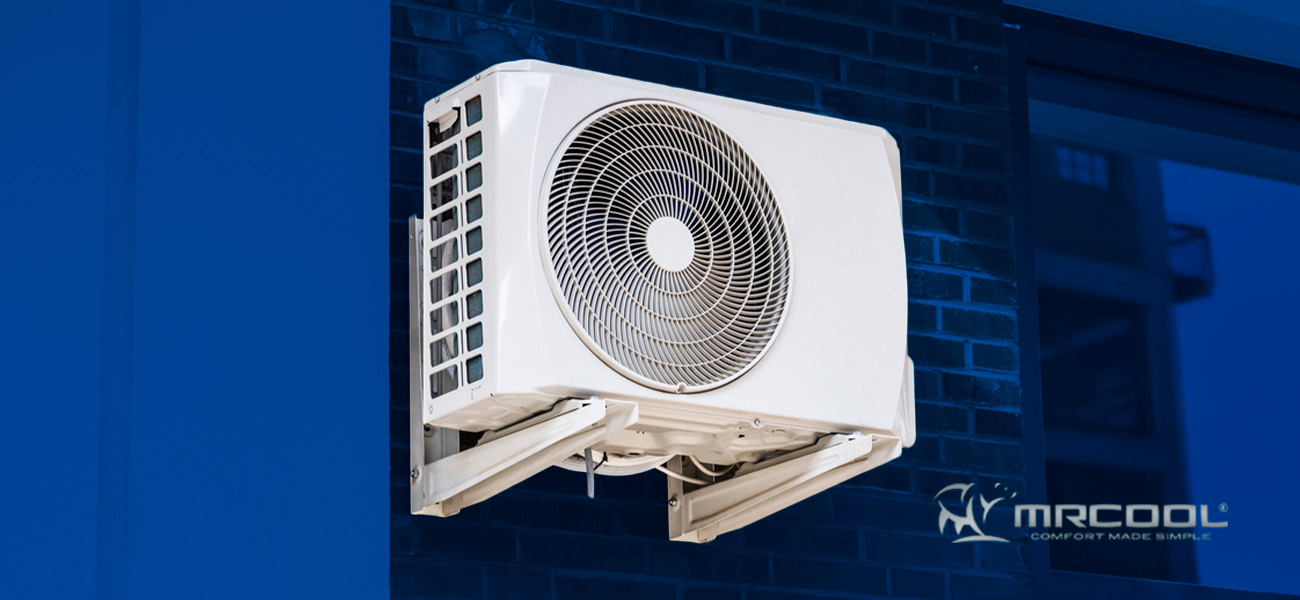
The Complete Guide to Ductless Heat Pumps
Ductless heat pumps can be a great addition to a home, but what exactly do they do? Learn everything from what a ductless heat pump is and how it works to the benefits and other important ductless system information with this complete guide.
What Is a Ductless Heat Pump?
Ductless heat pumps, or mini split heat pumps, replace radiator or baseboard heating and cooling window units. As the name suggests, ductless heat pumps do not require ductwork to function. This makes them ideal for homes, or areas of homes, without ductwork. Even without ducts, you and your family can live in comfort, regardless of the temperature outside.
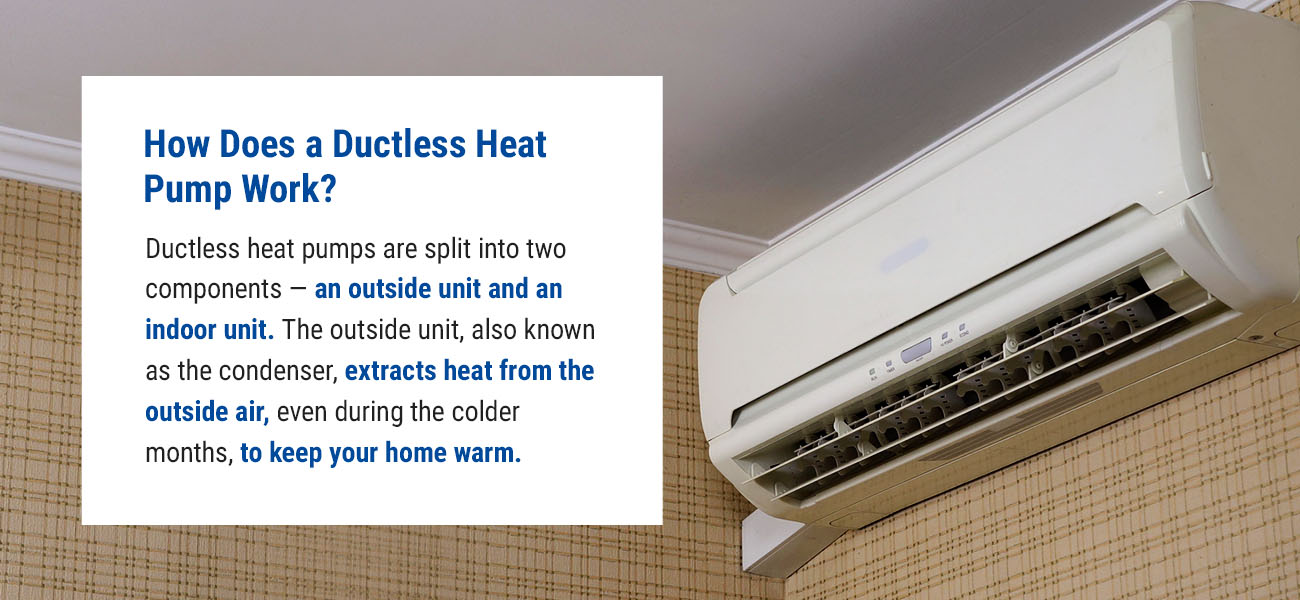
How Does a Ductless Heat Pump Work?
Ductless heat pumps are split into two components — an outside unit and an indoor unit. These units are connected by a thin pipe full of refrigerant. Ductless heat pumps are able to keep your home warm in the winter and cool in the summer. For both heating and cooling purposes, refrigerants and coils absorb and release heat.
The outside unit, also known as the condenser, extracts heat from the outside air, even during the colder months, to keep your home warm. Ductless heat pumps heat your home by following these steps:
- To start the heating process, heat from the air is extracted by the outside unit and pulled into the ductless heat pump.
- The refrigerant in the outside coil absorbs the heat.
- The compressor adds more heat to warm the refrigerant even more.
- The hot refrigerant flows through the connecting pipe and enters the indoor coils.
- The heat is released into your home.
During the warmer months, the ductless heat pump works in reverse. The indoor unit, or the air handler, extracts the warm air from your home and pushes it outside. This process works thanks to the following steps:
- The indoor unit extracts the warm air from the inside of your home and pulls it into the ductless heat pump.
- The indoor coil’s refrigerant absorbs the extracted heat.
- The heated refrigerant continues through the connecting pipe and enters the compressor.
- The outdoor coil releases heat from the refrigerant into the open air, allowing the now-cool refrigerant to travel inside and repeat the process.
In short, ductless heat pumps use heat exchanger coils to move hot air from one area to another depending on if you’re trying to heat or cool your home. A single outdoor unit is able to work with up to four indoor units, creating a complete and efficient cooling and heating system.
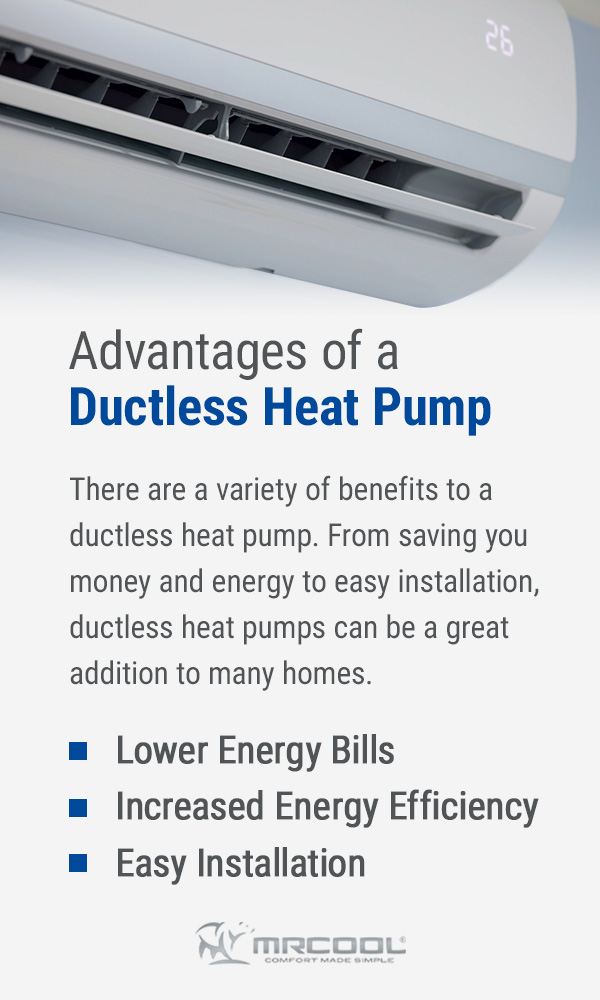
Advantages of a Ductless Heat Pump
There are a variety of benefits to a ductless heat pump. From saving you money and energy to easy installation, ductless heat pumps can be a great addition to many homes. Learn more about the advantages of ductless pump systems below.
Lower Energy Bills
Each room with a ductless heat pump has its own thermostat. As you can control which rooms need heating or cooling and how much, you can better control the system’s energy use and save money. Additionally, efficient systems like the ductless heat pump will reduce your energy bill since only the energy needed is being used. Older, more inefficient systems may have leaks, which cause unnecessary energy use.
Ductless heat pump systems often operate on less power because they are typically smaller-sized systems than other heating and cooling options.
Increased Energy Efficiency
Traditional duct heating and cooling systems have much higher energy losses than ductless systems. Poorly insulated or sealed ducts lead to leaking, causing your system to have to work harder to make up for the temperature-controlled air it’s losing. More than 30% of energy consumption is lost due to ducts, meaning ductless heat pumps are a much more energy-efficient option.
Since you can strategically place the units throughout your home, you only have to heat or cool the rooms you desire. Heating or cooling a house by room is much easier and needs less energy than heating a house as a whole. MRCOOL ductless heat pump products are Energy Star certified, meaning they go above and beyond the government’s energy efficiency guidelines.
Easy Installation
The installation requirements for ductless heating and cooling are a breeze. All you need is a small hole through an external wall to connect the indoor and outdoor units. Depending on the system, the outdoor unit can even be placed a number of feet away from the indoor unit, so you can still heat or cool the front of your home while placing the outdoor unit in a less distracting place, like the backyard.
This system also clears up floor space and lets you have full use of your windows, as the indoor unit can be placed on the wall or ceiling. No more bulky window units or large systems taking up floor space. Your installer can place your ductless heating pump system up high so it is out of the way.
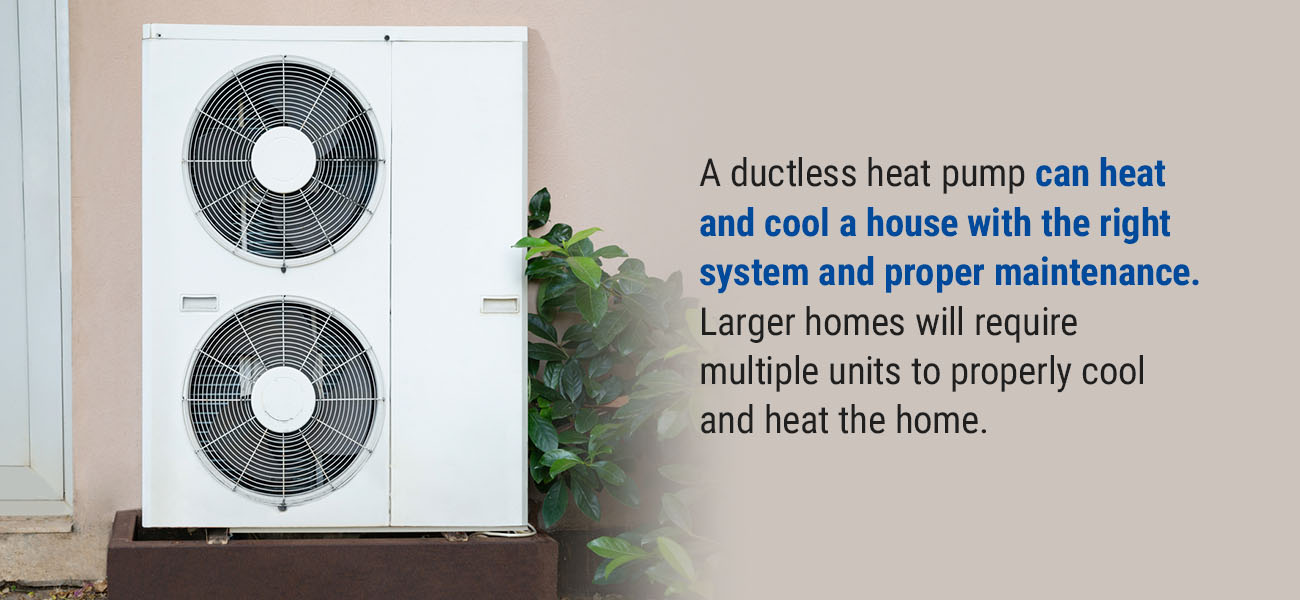
Can a Ductless Heat Pump Heat a Whole House?
A ductless heat pump can heat and cool a house with the right system and proper maintenance. Larger homes will require multiple units to properly cool and heat the home. The indoor units can interconnect to create a network that regulates multiple room temperatures.
It’s best to consult an HVAC technician on the optimal placement and number of units your home needs. Improper planning will cause the system to work ineffectively — leaving you with a home that is too warm or too cold.
Do Ductless Heat Pumps Work in Cold Weather?
Ductless heat pump systems do work in cold weather. However, the system’s efficiency can decrease during extreme weather. Ductless heat pumps have to work overtime to produce heat during frigid temperatures. Generally, ductless heat pumps need a minimum temperature of 30-40 degrees Fahrenheit for optimal operation. This minimum temperature may vary by manufacturer.
However, you can still heat your home when the weather is below the recommended ductless heat pump minimum temperature. Backup heat sources, such as gas-powered heaters and electric baseboard heaters, are available to help supplement heat in your home. Some ductless heat pumps may not need supplemental heat at all. Manufacturers have begun to produce heat pumps, such as the MRCOOL 4th Generation DIY system, that has models able to operate in temperatures as cold as -13º Fahrenheit.
If you live in an area that does not frequently experience extremely cold temperatures, you shouldn’t have to worry too much about your ductless heat pump properly heating your home throughout the winter. Some extra steps may need to be taken for those in colder climates, but it is still possible to keep your home warm throughout the cold months with ductless heat pumps.
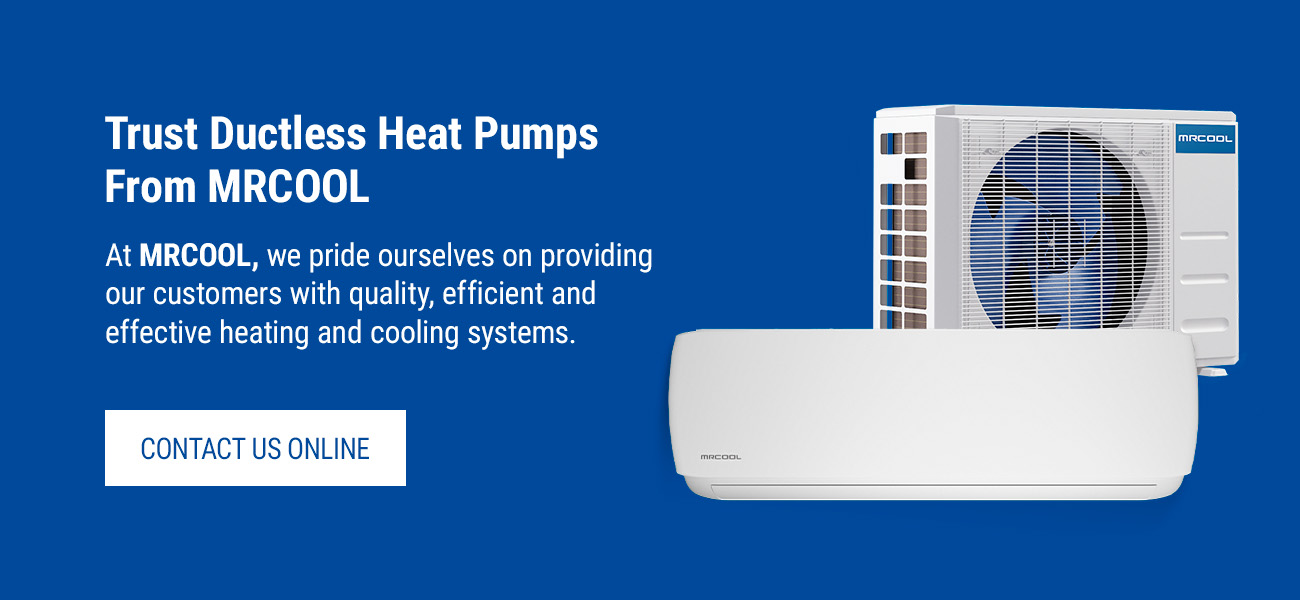
Trust Ductless Heat Pumps From MRCOOL
At MRCOOL, we pride ourselves on providing our customers with quality, efficient and effective heating and cooling systems. Our various ductless heat pump or mini-split options are sure to keep homes at a comfortable temperature. Whether you’re looking to invest in a high-quality ductless heat pump for your own home or you’re looking to become a MRCOOL dealer to help your customers achieve maximum comfort, our team is here to help.
Contact us online to learn more about MRCOOL and how our products can help you today.


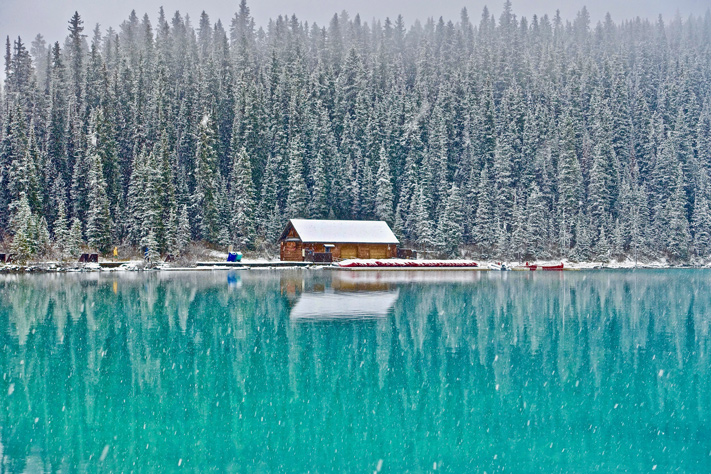



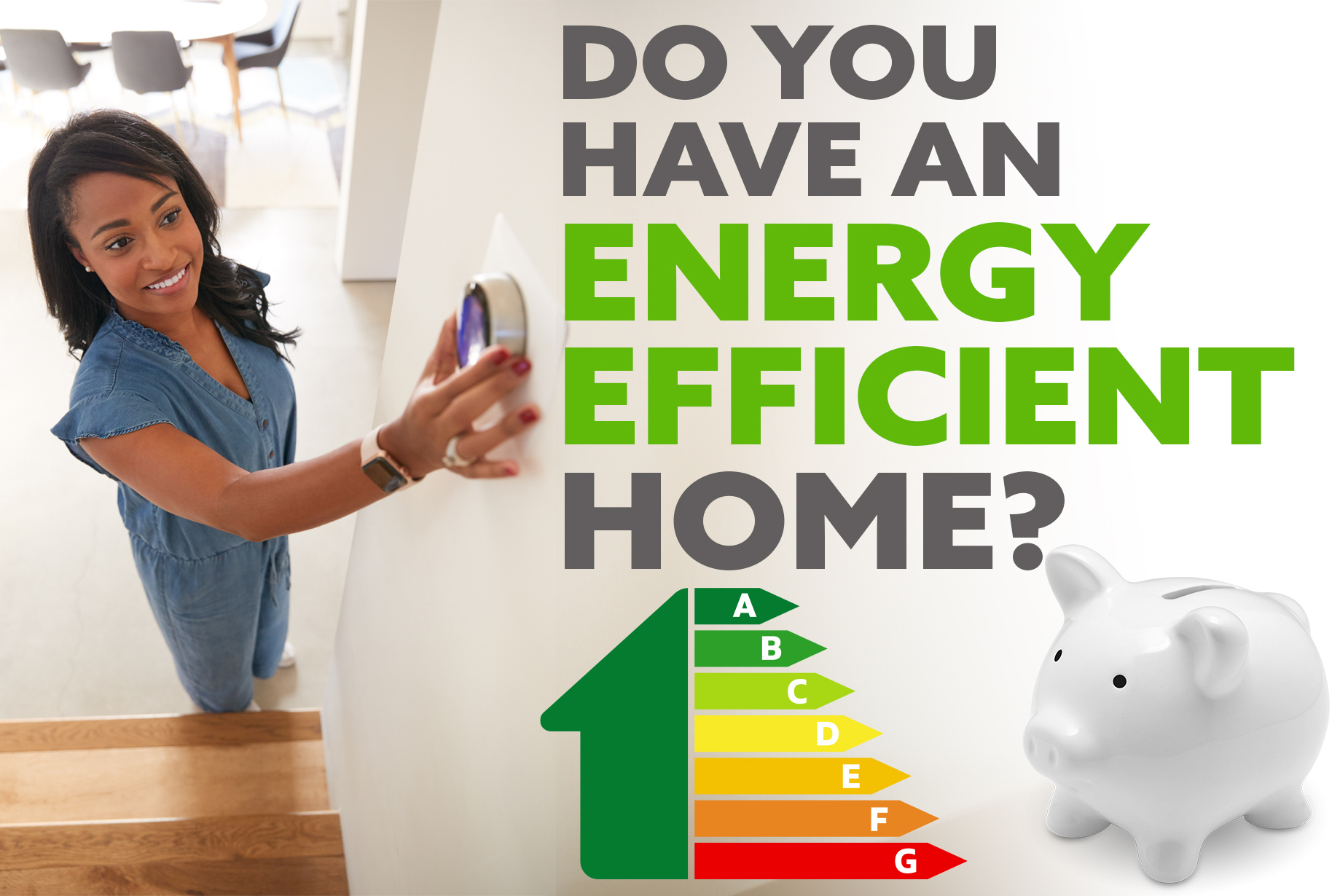

The literature on 4th Gen says that it “has models able to operate in temperatures as cold as -13º Fahrenheit“ .
Which models does this apply to?
Is this all 4th Gen, or specific models only?
The manuals for the 4th Generation DIY series have a table with temperature limits for models on them. Here’s the single-zone and the multi-zone.
My Mr Cool ductless mini split is having problems with outside refrigerant line freezing up in cooling mode.Is this something that can be fixed
Please give us a call at 270-366-0457 as soon as you possibly can.